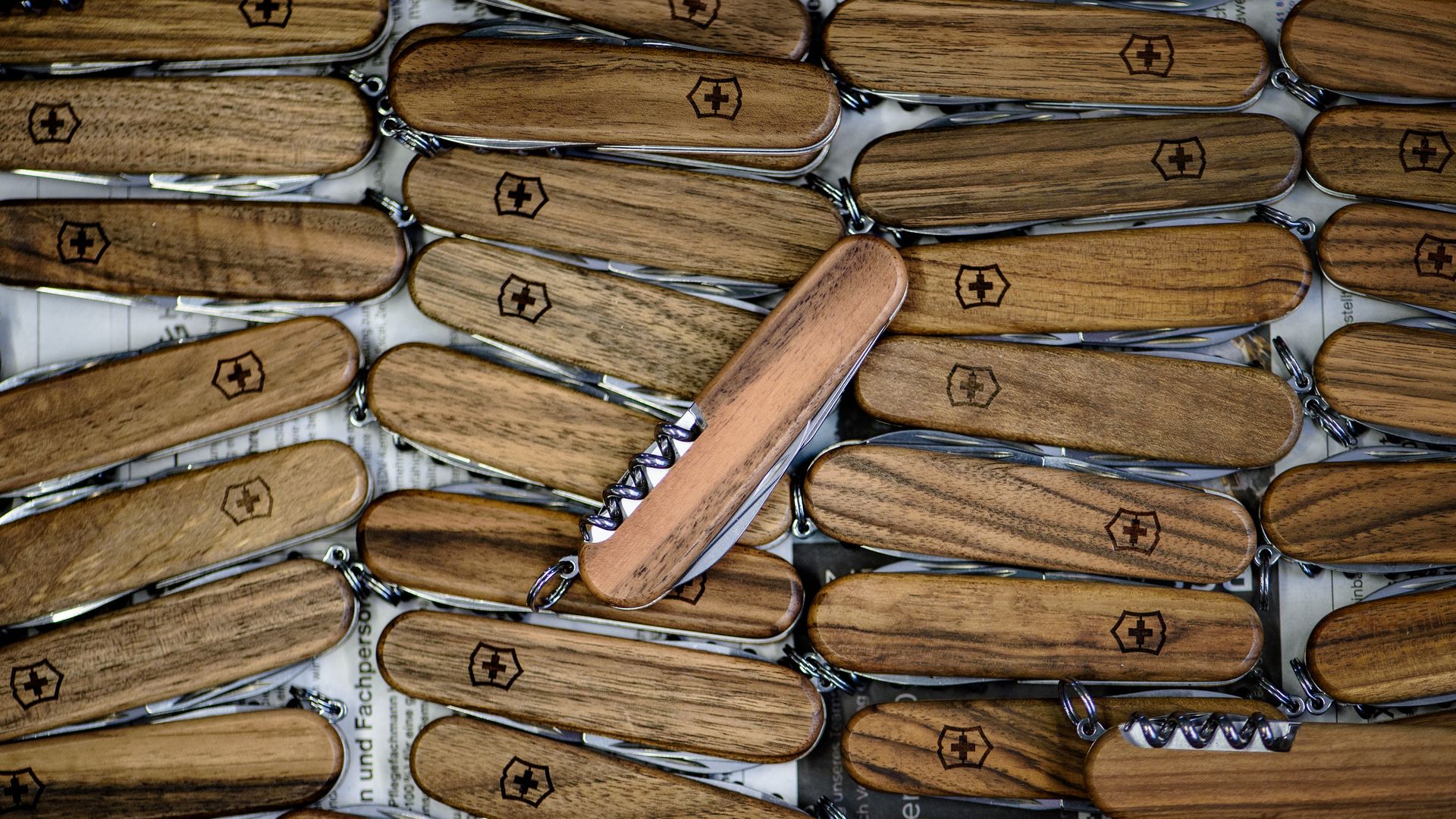Victorinox pocket knife
“Switzerland's sharpest export hit” - by Omar Gisler
Victorinox produces the most famous knife in the world in Schwyz. The Swiss Army Knife has proven itself as an emergency aid as well as a souvenir. This is because one secret is particularly closely guarded.
“Never leave the planet without one.”
The phrase does not come from the Victorinox marketing department. Rather, it is a recommendation from NASA astronaut Chris Hadfield, who was on a space shuttle to the Russian space station MIR in 1995. When he tried to open the hatch of the MIR after docking, it was stuck shut and tied up with cables. Hadfield pulled out his pocket knife: “I used it to break into the MIR, so to speak.” It was no coincidence that he had the little red one with him. Victorinox pocket knives have been part of the basic equipment of NASA teams since the 1970s. They have proven their worth not only in space, but also on earth. The brochure “A companion for life” contains a large number of episodes in which human destinies were literally on a knife's edge and Victorinox knives were valuable helpers or even rescuers in emergencies. The spectrum ranges from life-saving tracheotomies on small children in airplanes to emergency amputations in the African bush and the repair of frozen oxygen tanks in the Himalayas.
And who invented it? A man from Schwyz!
Karl Elsener, born in 1860, the fourth son of a hat maker from Schwyz. After working as a journeyman in Paris and southern Germany, he and other blacksmiths came up with the plan to develop a knife for the Swiss army in 1884. The 25 colleagues gave up when a German competitor offered the cutting tools at a much lower price. Elsener carried on - and almost went bankrupt in the process. He only survived thanks to grants from relatives. But necessity is the mother of invention. Elsener worked on an all-rounder, a device that was just as useful to the soldiers for eating as it was for disassembling their rifles. In 1891, the time had come: he was allowed to deliver his folding knife with rifle opener, awl and slotted screwdriver to the army. One year later, his factory in Ibach near Schwyz already employed thirty people. In addition to the blacksmiths, it was mainly women from the surrounding villages who contributed to the success by assembling the individual pieces at home.
From souvenir to cult object
One woman played a particularly important role in the life of knife pioneer Elsener: his mother Victoria. After her death in 1909, he introduced the brand name Victoria in her memory and had the emblem with the cross and shield legally protected. From 1921, the knives were produced with the newly invented stainless steel - called Inox. The combination of the two words “Victoria” and “Inox” gave rise to the current company and brand name. Ten years later, Brown Boveri installed the world's first fully electric hardening shop in Ibach. This automation ensured the consistently high quality of all knives. Victorinox began its worldwide triumphal march after the Second World War, when US soldiers stationed in Europe bought large quantities of the pocket knives and brought them home as souvenirs. The Swiss Army Knife soon became a cult object: it was even included in the Museum of Modern Art in New York, the Valhalla of design art.
Driving innovation forward
Victorinox has always responded to setbacks with remarkable innovative strength. For example, when the pocket knife was banned from hand luggage on airplanes after the terrorist attacks of 2001 and sales plummeted by a third, the company pushed ahead with diversifying its range. Victorinox launched kitchen knives, wristwatches, suitcases, rucksacks, travel accessories and even a perfume line. However, the core business remains the pocket knife, of which there are over 400 different models.
Another remarkable detail of the pocket knife is the spring, which is bent in such a way that a bright click sounds every time an open blade snaps back into place. The click is caused by the high spring tension of up to 300 kilograms. The tension lasts a lifetime and never lets up. The competition has so far tried in vain to replicate this typical feature. How Victorinox achieves this is the company's best-kept secret. In July 2017, the company, which employs over 2,000 people and is now managed by the fourth generation of the Elsener family, celebrated the production of the 500 millionth pocket knife in its history.
Building pocket knives
In addition to the factory store in Ibach near Schwyz (opposite the Mythen Center), there are Victorinox stores throughout Europe, which stock over 400 models of the Swiss Army Knife. A unique highlight is the personalization station in the Victorinox store in Brunnen. Various personalization options for pocket knives, household knives, cases and watches are offered here.
